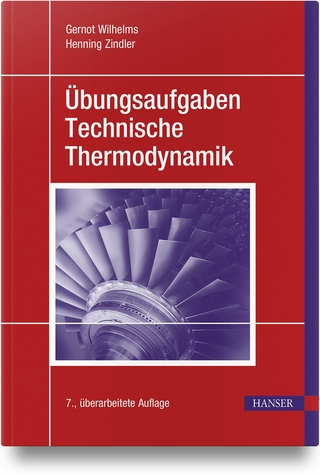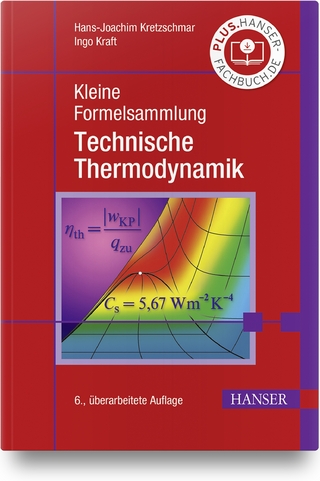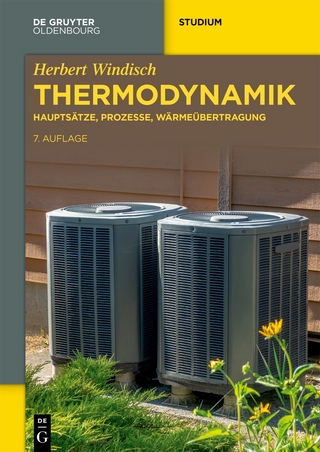
Cryocoolers Applications
Kluwer Academic / Plenum Publishers (Verlag)
978-0-306-41219-6 (ISBN)
- Titel ist leider vergriffen;
keine Neuauflage - Artikel merken
During the 1950s I built two efficient helium liquefiers in which essentially leather pistons were used.
of Part 2.- 8 Heat Exchangers in Cryocoolers.- Nomenclature.- Heat Exchangers in Cryocoolers.- Types of Heat Exchangers Used in Cryocoolers.- Recuperative Exchangers.- Tubular Exchanges.- Plate-Fin Exchangers.- Perforated Plate Exchangers.- Fundamentals of Recuperative Theory.- Exchanger Effectiveness.- Design of Recuperative Heat Exchangers.- Maldistribution of Flow.- Axial Heat Conduction.- Friction Effects.- Transient Response of Heat Exchangers.- Oscillatory Flow Systems.- Enhanced Heat Transfer Surfaces.- Regenerative Heat Exchangers.- Dynamic Regenerative Exchangers.- Static Regenerative Exchangers.- Common Theory for Static and Dynamic Types.- Advantages and Disadvantages of Regenerative.- Exchangers.- A Low-Temperature Problem: The Regenerator Material.- Heat Capacity.- Heat Regenerator.- Hausen Regenerator.- Presentation of Performance Data: Reduced-Length-Reduced-Period Method.- NTU-Effectiveness Method.- Application of Theory to Regeneration in Stirling-Type Engines with Oscillatory Flow.- Regenerator Design for Stirling Engines.- Experimental Performance.- Heat-Transfer and Fluid-Friction Characteristics of Dense-Mesh Wire Screens.- Regenerative Annulus.- Heat Pipe.- Heat Exchangers for Very Low Temperature.- References.- 9 Some Aspects of Design.- Target Definition.- Reliability.- Coldfinger Design.- Conduction Heat Leakage.- Cooldown.- Regenerator.- Shuttle Heat Transfer.- Balancing.- Case 1: Single Revolving Mass.- Case 2: Several Masses Revolving in the Same Plane..- Case 3: Several Masses Rotating in Several Planes.- Reciprocating Masses.- Partial Primary Balancing.- Secondary Inertia Forces.- Multiple Reciprocating Forces.- Design Guidelines for Engine Balancing.- Perfect Dynamic Balance.- Bearings.- Fluid-Lubricated Bearings.- Oil or Gas Lubrication.- Grease-Lubricated Bearings.- Ball and Roller Bearings.- Gas Bearings.- Gas-Lubricated Pistons.- Gas Bearings on Shafts and Flat Surfaces.- Dry-Rubbing Bearings.- Seals.- Static Seals.- Dynamic Seals.- Piston Side Thrust.- Hermetic Seals.- Close Tolerance Seals.- Materials.- Significant Properties.- Mechanical Properties.- Physical Properties.- Fluorocarbons.- Closure.- Cooling.- Air Cooling.- Water Cooling.- Spacecraft Radiative Cooling.- Electrial and Electronic Systems.- Drive Motors.- Brushless dc Motors.- Electric Controls.- References.- 10 Practical Problems in Cryocooler Design and Operation.- Comparison of Cryocooler Types.- Integral Stirling.- Split Stirling.- Integral Vuilleumier (VM).- Split Vuilleumier.- Giflford-McMahon (GM).- Design Considerations and System Trade-OfTs.- Heat Rejection.- Microphonics.- Thermophonics.- Special Problems Related to Cryocooler Operation.- Gas Contamination.- Helium Gas Retention.- Rubber O-Ring Seals.- Casting Leaks.- Metal Porosity.- Weld Joints.- Seal Problems.- References.- 11 Fundamentals of Alternate Cooling Systems.- Thermodynamic Considerations.- Ideal Refrigeration Cycles.- Interaction of Force with System.- Entropies and Refrigeration Principles of Various Systems.- Helium-4 and CCl2F2.- Other Gas-Liquid-Solid Systems.- Electron Systems.- Phonon Systems.- Other Solid Systems.- Magnetocaloric Systems.- Electrocaloric Systems.- Chemical Systems.- Mixtures.- Photon Systems.- How Much Entropy is Enough?.- Alternate Means to Eliminating Mechanical Parts.- References.- 12 Very-Low-Temperature Cooling Systems.- He3 Refrigerators.- Properties of He3.- Single-Cycle He3 Refrigerators.- Continuous He3 Refrigerators.- He3-He4 Dilution Refrigerators.- Properties of Liquid He3-He4 Mixtures.- Principles of Dilution Refrigerators.- Examples of Dilution Refrigerators.- Multiple Mixing Chambers.- He4 Circulating Dilution Refrigerators.- Pomeranchuk Cooling.- Properties of He3 on the Melting Curve.- Examples of Pomeranchuk Cooling.- Magnetic Refrigerators.- Electron-Spin Systems.- Nuclear-Spin Systems.- Hyperfine Enhanced Nuclear-Spin Systems.- Combined Systems.- Dynamic Nuclear Polarization.- References.- 13 Cryogenic Engineering and Cryocooler Development in the USSR.- Cryogenic Research Centers in the USSR.- Principal Cryogenic Publications in the USSR.- Properties of Substances at Low Temperatures.- Computing and Analyzing Cryogenic Processes and Cycles.- Entropy Method.- Exergy Method.- Expanders and Stirling Engines.- Expansion Engines.- Turboexpanders.- Stirling Engines.- Heat Transfer Processes and Heat Exchangers.- Boiling of Cryogenic Liquids.- Convective Heat Transfers.- Heat Exchangers and Regenerators.- Cryogenic Insulation.- Cryogenic Cooling Systems and Some Types of Cryogenic Equipment.- Helium Liquefiers and Cooling Systems.- Cryogenic Vessels and Associated Apparatus.- References.- 14 Cryogenic Engineering and Cryocooler Development in Japan.- Helium Liquefiers and Refrigerators.- Component Development.- Dry Helium Compressor.- Reciprocating Expanders.- Final Liquefaction Process and Efficiency.- Instability in Forced Cooling Systems.- Superconducting Magnetic Levitation of Trains (Maglev)..- Pulsed Refrigeration System.- Conceptual Design.- Appendix 14.1.- References.- General Reading.- Government Reports.- Relevant Conferences.- Patents.- Appendix I Glossary of Terms for Cryocoolers and List of Organizations.- Appendix II Organizations Having Substantial Interest in Cryocoolers and Cryocooler Manufacturing.- Organizations.- Manufacturers.- Appendix III Guide to the Cryogenic Engineering Literature Introduction.- Government Reports.- NTISearches.- Superintendent of Documents (SupDocs).- The Cryogenic Data Center.- Conference Proceedings.- Foreign Government Sources.- Open Literature Sources.- Advances in Cryogenic Engineering.- Cryogenics.- International Cryogenic Engineering Conference.- Applications of Cryogenic Technology.- International Institute of Refrigeration.- Low-Temperature Physics.- Books, Monographs, and Course Notes.- House Journals.- Name Index.
| Erscheint lt. Verlag | 30.11.1983 |
|---|---|
| Reihe/Serie | The International Cryogenics Monograph Series |
| Zusatzinfo | biography |
| Verlagsort | Dordrecht |
| Sprache | englisch |
| Themenwelt | Naturwissenschaften ► Physik / Astronomie ► Thermodynamik |
| ISBN-10 | 0-306-41219-5 / 0306412195 |
| ISBN-13 | 978-0-306-41219-6 / 9780306412196 |
| Zustand | Neuware |
| Haben Sie eine Frage zum Produkt? |
aus dem Bereich


